I’ve been teaching a series of online fencing class while we’re all stuck in quarantine. This month’s class for advance students is Voids. We just went over the mechanics for giaratas and low voids. Two of my students are lefty and were curious as to how voids would work in a lefty vs. right situation.
So I got creative with my camera and Photoshop.
The TL;dr version is that the giratas and low still voids work in a lefty vs. righty situation. They just look a little different.
In righty vs. righty (or lefty vs. lefty), low voids (like the sbasso or passatta sotto) would include a step more to the opponent’s outside line. In a lefty vs. righty situation, those same maneuvers would be to the opponent’s inside line (which is fine as long as they don’t have an off-hand weapon like a dagger or stick to hit you with).
The giratas also work fine in lefty vs. righty, though the target area is a bit more reduced than in righty vs. righty (or lefty vs lefty).
Below are some Lefty vs. Righty plays for a tutta girata (aka Scanso della Vita) and the passata sotto (written to sound like a 17th C manual translation… for fun):
How a Left-Handed Fencer May Strike a Right-Handed Fencer While Carrying Their Body Out of Presence
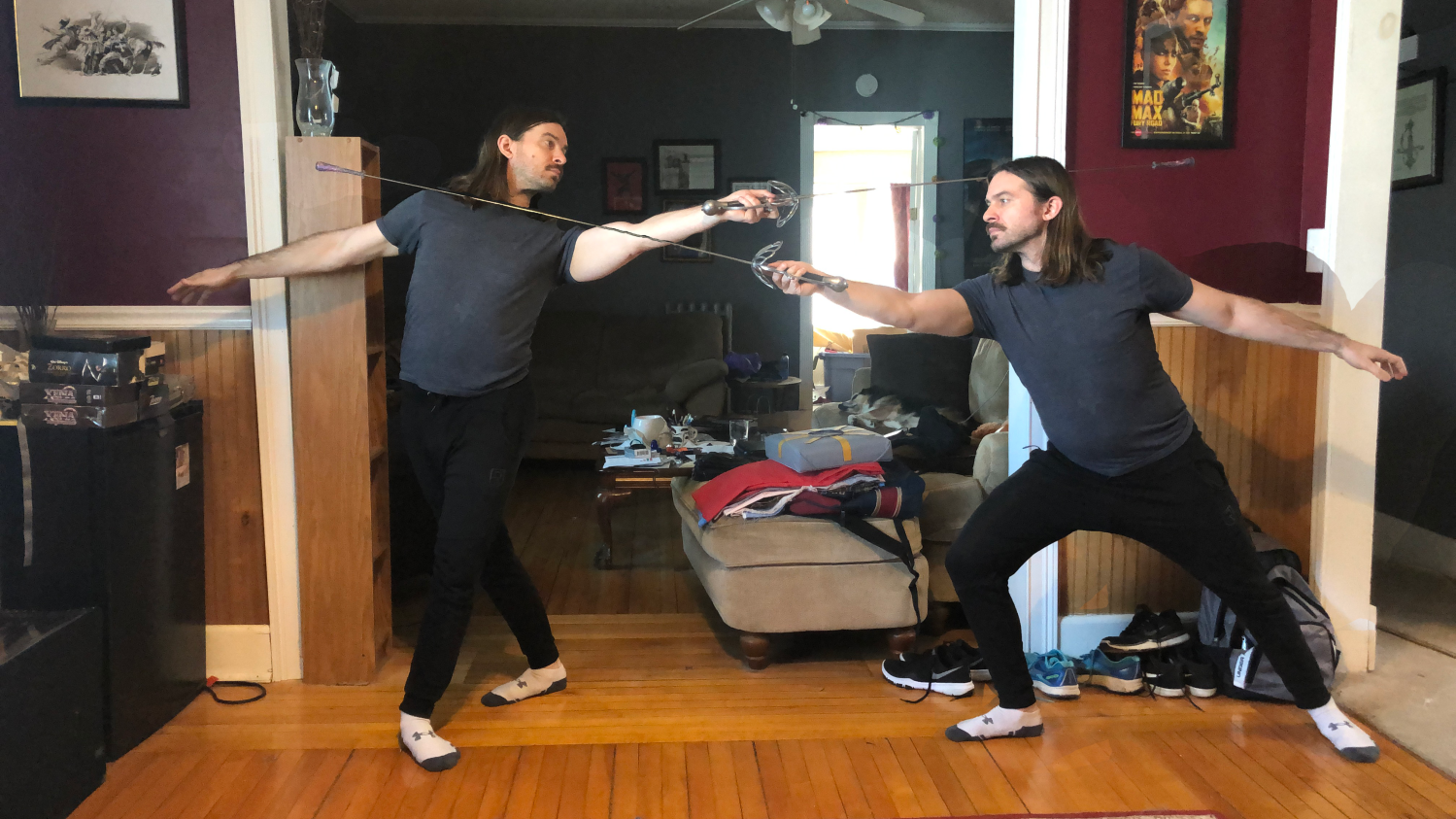
Striking your opponent while voiding the body is worthy of study for it takes both dexterity of the body as well as expedition of the mind. A firm grasp of tempo and measure is imperative.
The following image illustrates how a left-handed fencer may strike a right-handed fencer while taking their body out of presence.
It could happen like this. The left-handed fencer finds their right-handed opponent on their own inside line using quarta. The right-handed fencer, in the tempo of being found, performs a cavazione and attacks in quarta. The left-handed fencer, performs a contracavazione, then carries their body out of presence with a tutta girata, and strikes in quarta, as shown.
It could also happen this way. The right-handed opponent finds our left-handed fencer to their own inside line. They press their advantage with a firm-footed lunge in quarta. The left-handed fencer responds with a cavazione, carrying their body with a scanso della vita.
Alternatively, the left-handed fencer finds their opponent to their inside line. In that tempo, the right-handed fencer performs a cavazione and attacks with a strong quarta. Instead of performing a contracavazione, the left-handed fencer can strike with a punta riversi around the opponent’s sword to the face or chest while taking their body out of presence in the manner described above.
Alternative targets could be the leg or lower flank by freeing the blade with a mezza cavazione.
It is also important to note that, as is what’s good for the goose is good for the gander, what works for the left-handed against the right also works for the right-handed against the left.
How a Left-Handed Fencer Can Strike a Right-Handed Opponent While Lowering the Body without Parrying
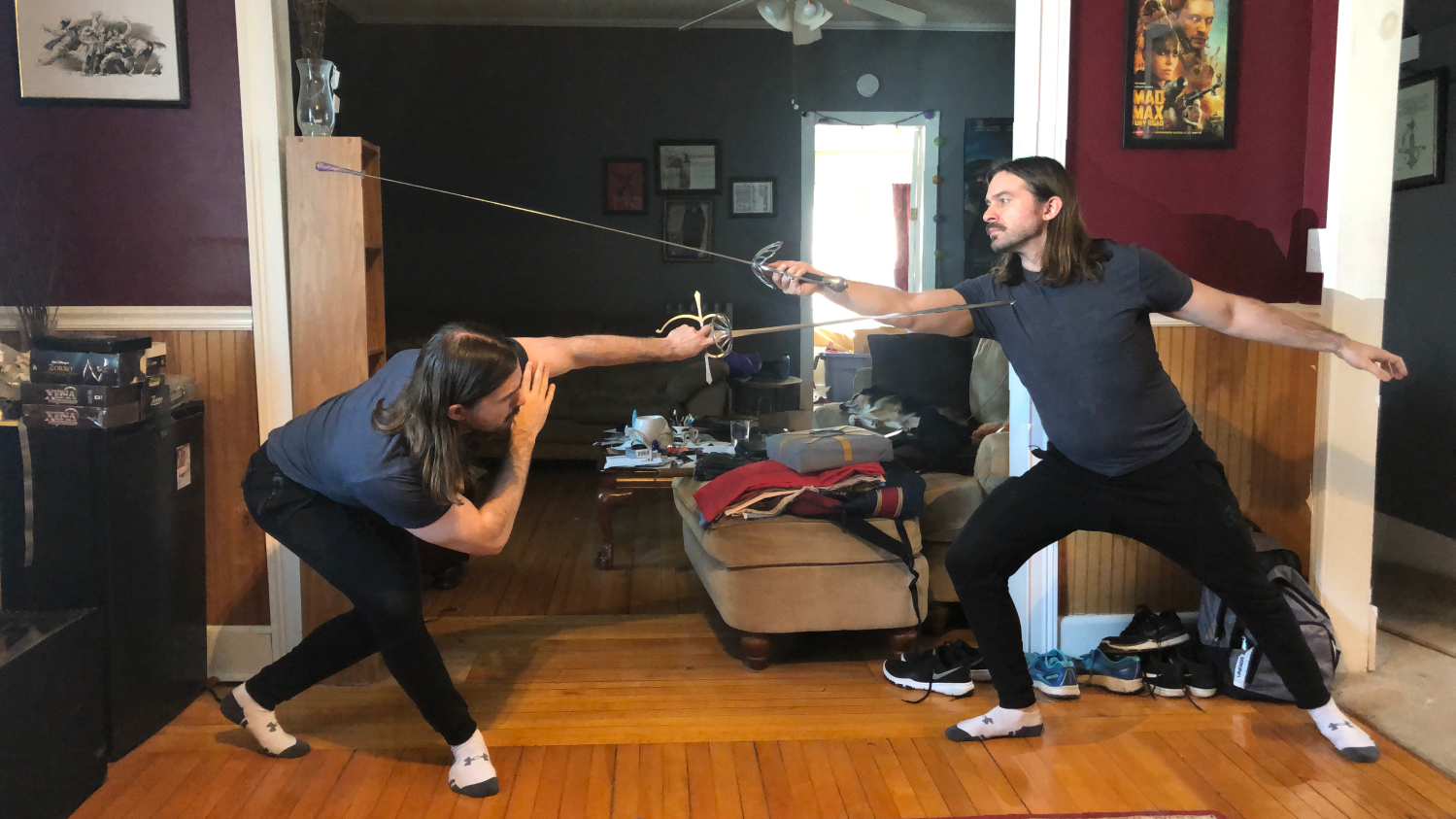
There are times in which it is more advantageous to strike an opponent below their sword and without parrying. Such is the case presented here.
The left-handed fencer finds their right-handed counterpart to their own inside line. The opponent performs a cavazione and aims to strike in a high quarta. The left-handed fencer lowers their body well away from the opponent’s tip while freeing their blade with a mezza cavazione and striking with a passing step forward, as shown in the image.
A similar play can happen this way. The left-handed fencer feints high to their opponent’s outside line, forcing their opponent into obedience. As the opponent moves to parry the feint, the left-handed fencer lowers their debole and body below their opponent’s hilt while stepping with a passing step.
A third scenario could play out thus. The right-handed opponent finds the left-handed fencer on their own inside line. They then look to press their advantage with a strong attack in quarta, high to the face. In that instant, the left-handed fencer lowers their body while freeing their blade, striking their opponent below the sword with a pass or a sbasso to their left.
In More Modern Terms…
These are just a few examples of how a lefty or righty may use voids to defeat their mirror image opponents. To make learning easier, I’ll break down the plays into steps.
For the giratas…
Sequence A:
- Fencer A finds Fencer B on their own inside line.
- Fencer B performs a cavazione in tempo and attacks in quarta.
- Fencer A performs a contracavazione and strikes while moving their body off the line of attack by using a girata.
Sequence B:
- Fencer A finds Fencer B on their own inside line & attacks with a lunge in quarta.
- Fencer B responds with a cavazione and strikes with a girata.
Sequence C:
- Fencer A finds Fencer B on their own inside line.
- Fencer B performs an attack via cavazione , pushing aggressively in quarta.
- Fencer A yields to the pressure by keeping the false edge facing the opponent’s blade and striking with a punta riversi while taking their body off the line of attack with a girata.
Note: I used a tutta girata (aka scanso della vita) in my example but any girata that takes your body off the line of attack can work. Similarly, while the example and illustration shows a strike to the face, you can perform a mezza cavazione and strike below the opponent’s sword to the flank or upper thigh. It depends on how high the opponent’s guard is when attacking.
For the low voids…
Sequence A:
- Fencer A finds Fencer B on their own inside line.
- Fencer B performs a cavazione and strikes in quarta with their guard held high.
- Fencer A lowers & folds their body to their off-hand side, and performs a passing step. The arm is turned into seconda, though it appears to be in prima from the outside view. The key is to keep the true edge facing the opponent’s blade.
Sequence B:
- Fencer A feints high to the outside line of Fencer B.
- Fencer B moves to parry the high attack, thus opening their flank.
- Fencer A performs a mezza cavazione and strikes with the passata sotto.
Sequence C:
- Fencer A finds Fencer B on their own inside line.
- Fencer A, feeling like they have strong control over Fencer B’s sword, moves to strike with a lunge in quarta.
- Fencer B voids the blow by folding and lowering their body while simultaneously performing a mezza cavazione to free their sword tip, and strike with a passata sotto,
Note: Instead of a passata sotto, fencers could also use a sbasso (a low, offline lunge).
These plays work both for a lefty facing a righty as well as a righty facing a lefty. It’s just the mirror image, as shown below:
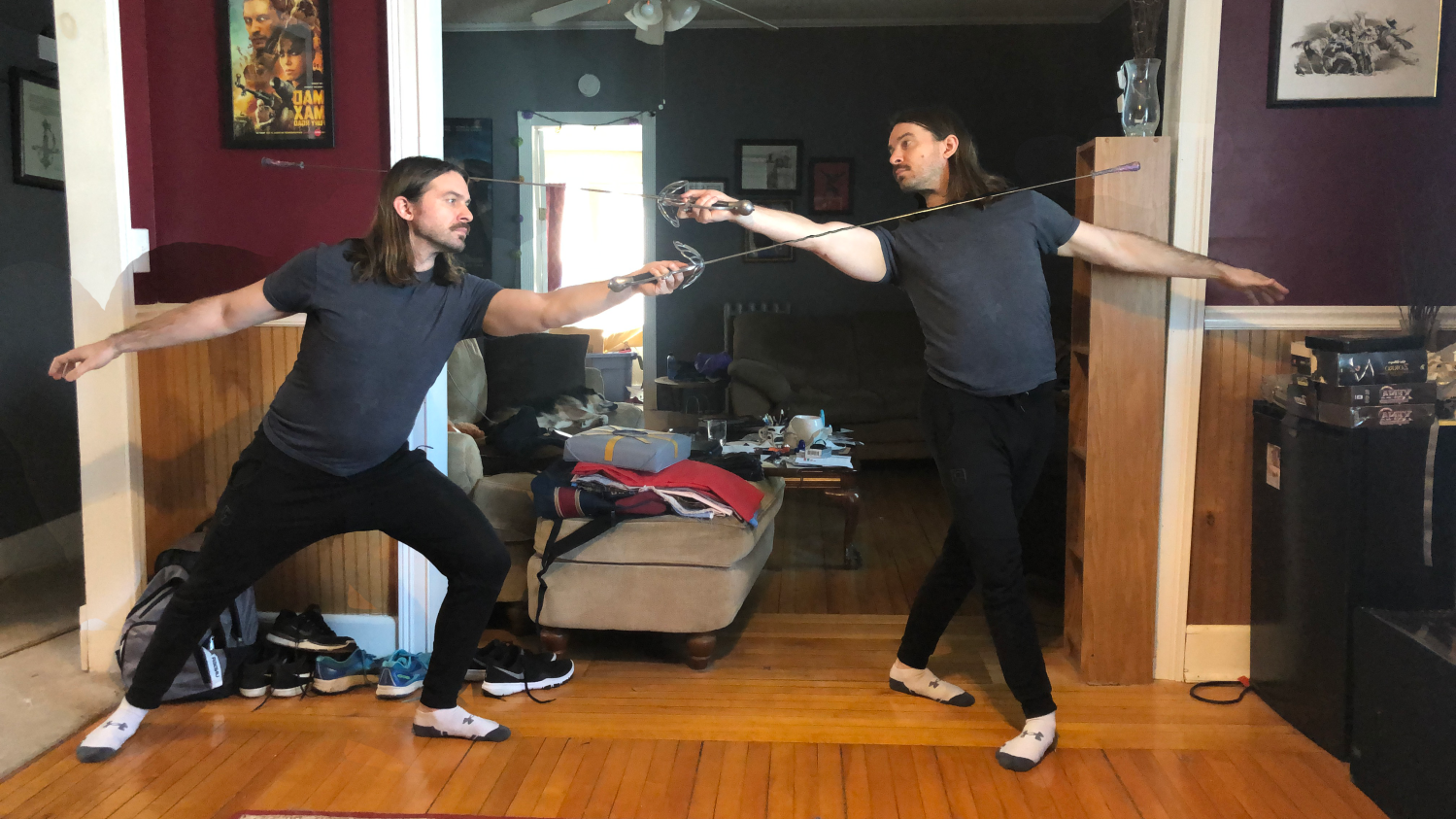
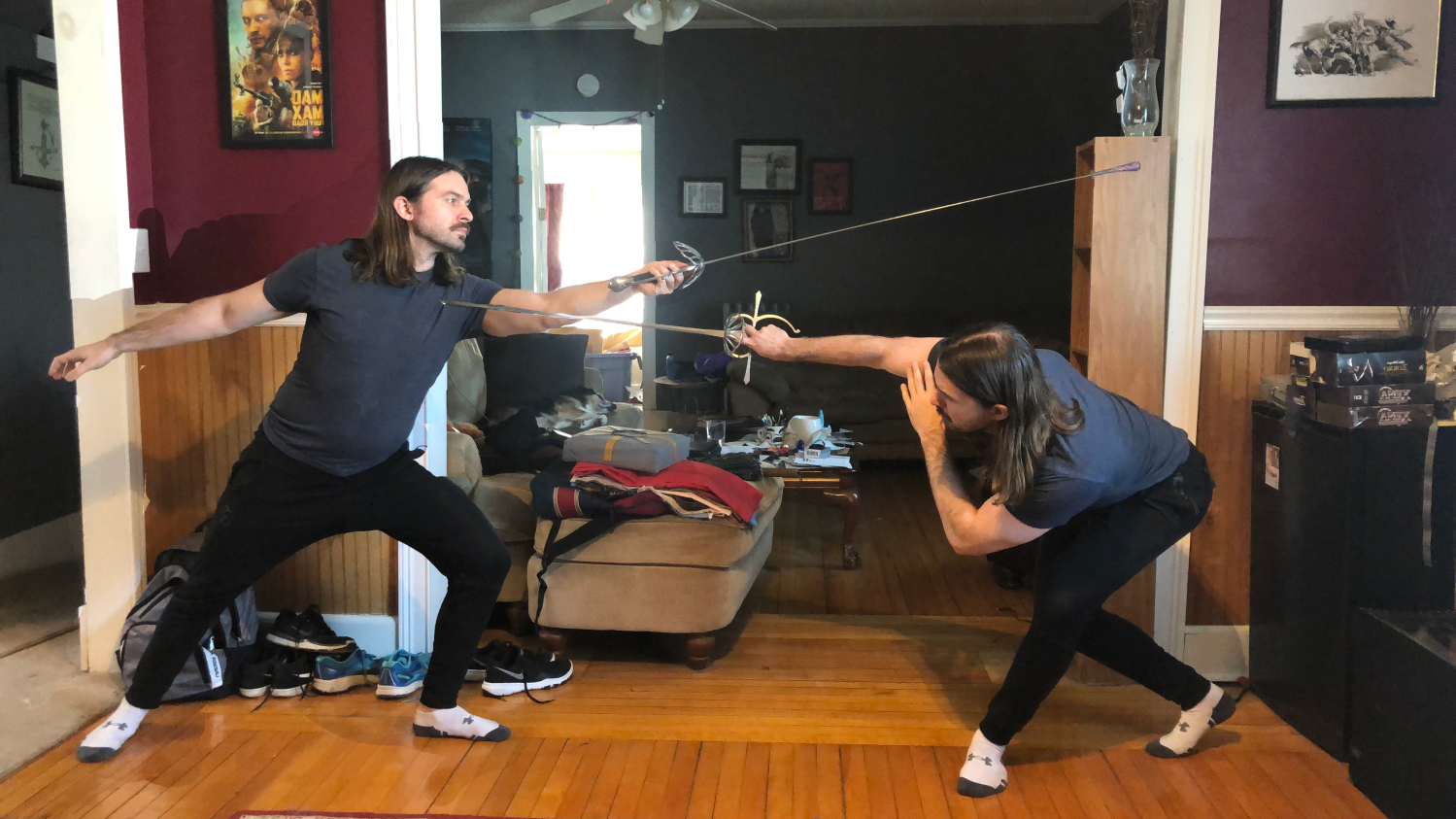



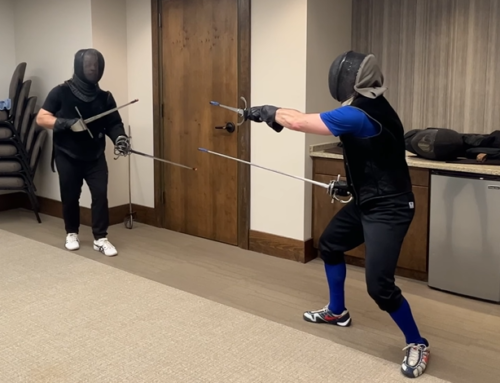
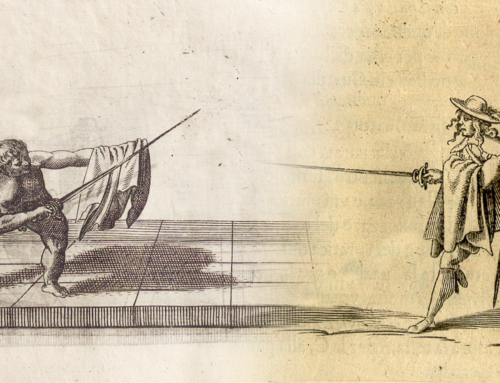

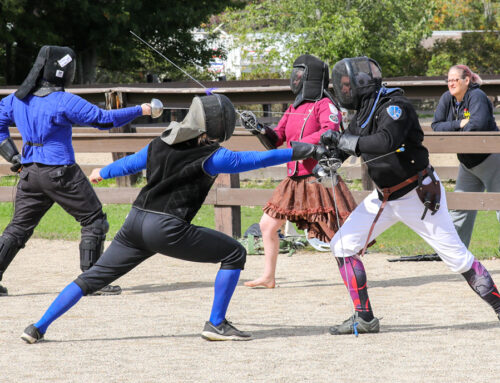
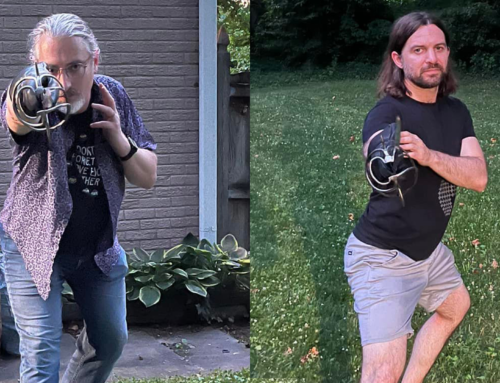
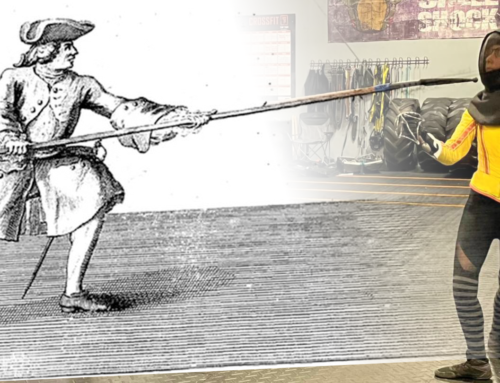
Leave A Comment